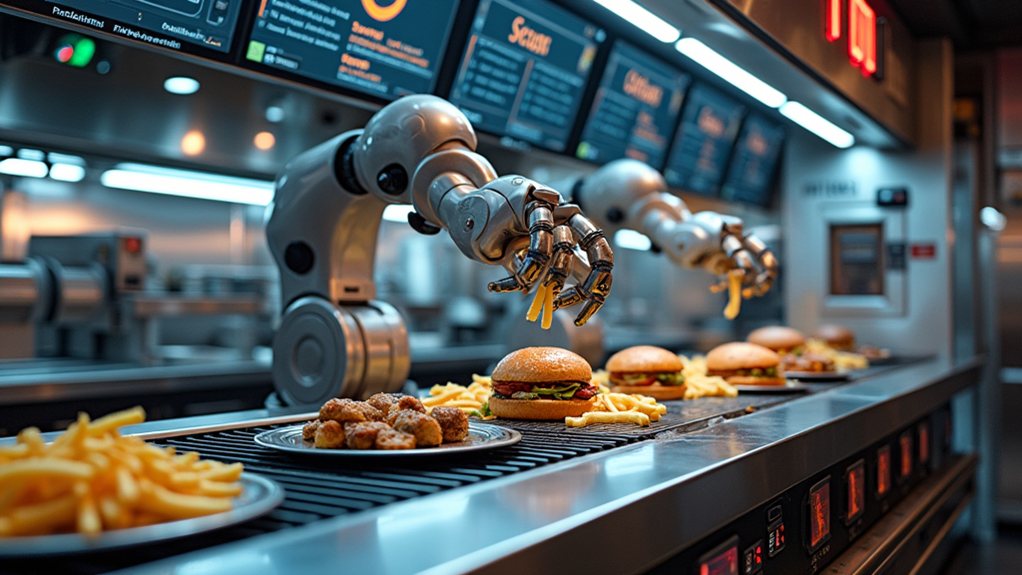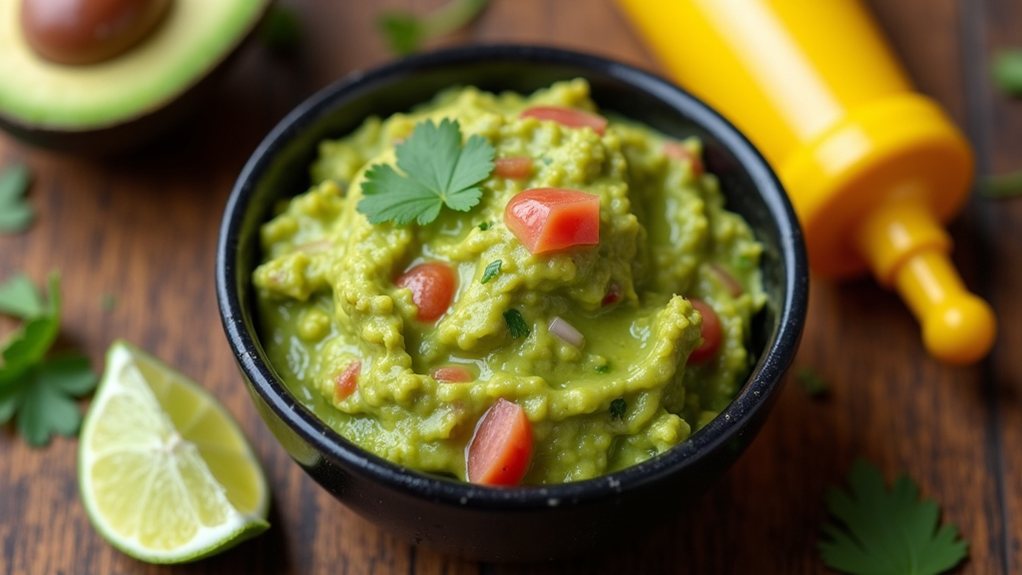Fast food giants are quietly transforming their operations through artificial intelligence. McDonald's, Yum Brands, and Wendy's now deploy AI-powered drive-thrus that recognize customers, suggest personalized menu items, and optimize order processing. These innovations aim to reduce wait times while simultaneously cutting labor costs, a delicate balance that industry leaders must navigate. Automation extends beyond customer interaction into food preparation, where machines guarantee consistency and safety. As these technologies become standard, consumers might soon encounter a dining experience that feels both familiar and surprisingly futuristic.
AI Revolutionizes Fast Food Operations and Experiences

The sizzle of frying oil and beeping order screens in fast food restaurants are now being joined by a new sound: the quiet hum of artificial intelligence systems transforming the industry. Major chains like McDonald's, Yum Brands, and Wendy's are investing heavily in AI technology to innovate how they serve customers and manage operations. McDonald's is revamping its entire technology footprint with AI-powered drive-thrus, while Yum Brands has introduced "Byte by Yum!" to optimize operations across its restaurant portfolio. McDonald's CEO has highlighted AI as one of the top trends for 2025, alongside protein and sauces.
Wendy's ambitious expansion of its FreshAI drive-thru system to 500-600 locations demonstrates the industry's commitment to this technology shift, despite early adopters facing challenges like system failures and incorrect orders. These growing pains haven't dampened enthusiasm, with 42% of restaurant operators believing AI will greatly impact the industry by 2025. The technology promises remarkable benefits, potentially reducing operational costs by up to 30% through multiple efficiency improvements.
Despite initial challenges, the fast food industry embraces AI with Wendy's bold FreshAI rollout leading potential cost reductions of 30%.
AI's impact extends beyond the drive-thru window and into the kitchen itself. Innovations like Miso Robotics' Flippy Fry Station are automating food preparation, ensuring consistency while addressing persistent labor shortages. Companies like Hyper-Robotics are leading this kitchen transformation, creating systems that improve food safety while reducing waste and energy consumption, making operations more sustainable long-term.
Customer experiences are being altered through AI-powered personalization that offers menu recommendations based on previous orders and preferences. Dynamic menu displays that adjust according to time of day, weather conditions, and even local events create more relevant dining options, while streamlining the ordering process reduces wait times and complexity. AI systems are also learning and remembering individual customer preferences for a more personalized dining experience.
The integration of AI into fast food operations represents more than just technological novelty—it's becoming vital for competitive survival. By improving order accuracy, optimizing inventory management, and boosting the general customer experience, these innovations are redefining what fast food service means in the 21st century.
As these systems continue to learn and improve, the distinction between technology and traditional restaurant operations will increasingly blur, creating a new standard for quick service dining.









